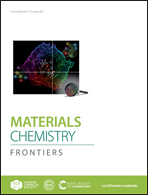Fast acid-leaching strategy treated hollow cobalt–carbon materials as highly efficient electrochemical catalysts for Zn–air batteries†
Abstract
Metal–organic frameworks (MOFs) are employed as ideal calcining templates for the synthesis of highly efficient metal–carbon based oxygen reduction reaction (ORR) and oxygen evolution reaction (OER) catalysts. However, owing to their high density of metal centers, MOFs derived metal–carbon based catalysts exhibit seriously aggregated metal nanoparticles, which greatly hinders their electrochemical performance. In this work, we synthesize a hollow Co@CN-P catalyst using in situ N,P-doped Co-MOF as a template and then post-treat it using a fast acid-leaching strategy [denoted as Co@CN-P-H+(D)] to remove aggregated, inefficient and unstable metal nanoparticles. In constrast, an impregnation acid-leaching strategy [denoted as Co@CN-P-H+(12 h)] is also investigated in this work. The optimal Co@CN-P10-750-H+(D) catalyst exhibits enhanced electrochemical performance, with a potential difference between the ORR and OER of only 0.734 V. When used as a cathode catalyst, the Co@CN-P10-750-H+(D) based liquid Zn–air battery (ZAB) exhibits the highest maximum power density and specific capacity (204.8 mW cm−2, 790.4 mA h g−1). Moreover, the liquid ZAB also delivers a long-term cycling stability (>800 cycles). The Co@CN-P10-750-H+(D) based solid-state battery also exhibits ultra-high maximum power density, specific capacity and long-term charge–discharge stability. In addition, the ZAB also displays strong practical application.



 Please wait while we load your content...
Please wait while we load your content...